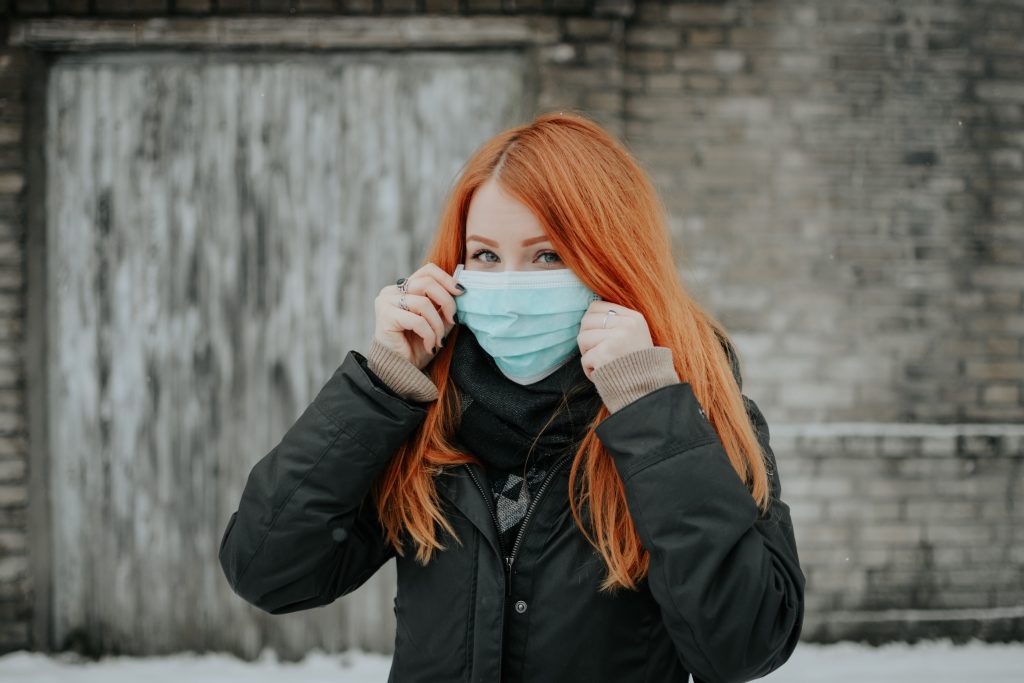Where were you when you found out the world was coming to an abrupt halt because of the novel coronavirus? Me? I was on a cruise ship in the middle of the Gulf of Mexico. I had many thoughts race through my mind at that very moment. Among them were, “Oh my gosh, get me off this thing!” And then, “Oh my gosh, I’M STUCK HERE!” And finally, “*Cough*cough* I have a tickle in my throat. *Cough* I think I’m having difficulty breathing. *Cough!*”
All of those things were true. I was stuck on a big ship in the middle of the ocean and I did have a dry cough. Unfortunately, I couldn’t do a darn thing about any of that because, well, I was stuck on a ship in the middle of the ocean. I realized in the midst of my “Oh no!” moment, I was having a slight panic attack that I needed to get under control. 
4 Steps to Fight Worry and Panic
The novel coronavirus has presented our world with a scary situation that we should all be mindful of. However, it doesn’t have to cause panic. Even though none of us are sure what the future holds, there are a few things within our control right now. It is fruitless to make up stories that may or may not come true in the future. Our sense of control will come from what we can manage at this very moment.
After getting off the ship safely, I was able to talk with some people in the healthcare profession. They have fears, too, and perhaps even more so since they are on the front lines. They are trained to run into the fire, not away from it, and they don’t have the luxury of social distancing like many of us do. In talking with one healthcare worker this week who was helping manage a large amount of staff and their fears, we talked through the exact steps I’d just gone through while on my cruise ship.
Assess the situation.
What are the known facts? Don’t make assumptions, don’t make up stories in your head; just stick to the facts, what you see, and what is known. Be mindful of right now. What is happening right now? Not 10 minutes ago or one week ago. Not what you hear about someone on the news. And not what you think might happen in one or two weeks.
When I had a slight panic on the ship, the only control I had was to pump the breaks and assess what was happening right then. The known facts were: I was safe in my cabin. I had a slight tickle in my throat, but I could take full, deep breaths. I was not dying. At that moment, I was okay.
Take some deep breaths.
Your brain works really well when it’s focused on just one thing, so refocus your attention to breathing, and make that the one thing. Think about only breathing, and this will calm your mind just a bit when you’re in the middle of a mild panic situation.
In the stillness of my cabin, I was mindful of focusing on the one thing I could have full control over at that moment, which was deep breathing.
Lean into your biggest fear.
The big question here: What are you really afraid of? At this moment, under these circumstances, happening right now. What is causing you the most panic? What is the absolute worst that could happen?
I realized that when everyone else got panicked, I marched right along to the beat of that drum, panic-stricken right along with them. But when I slowed to think about what I was personally worried most about at that moment, the answer was nothing. Was I afraid I’d get the coronavirus? Given the current facts of the situation, no. I’m a healthy, mid-forties woman, so not at a huge risk.
The absolute biggest fear, if I gave in to the stories racing through my head, is that I’d contract COVID-19 and die. First off, given the current facts, this is unlikely. But, if my absolute worst fear were to come true, is that what I’m afraid of? No, I’m actually afraid of being in pain while I die, not death itself.
As I spoke to a healthcare worker about a known patient with COVID-19, I found out this person was in a very severe state, on a ventilator, organs were shutting down, and lungs had all but stopped functioning. It broke my heart to hear the story, but I had the resolve to ask, “Is the patient in pain?” The answer was, “No, the patient is not in pain.” Because of sedation, the patient didn’t even know their current situation. We know the situation because we can see it. Would we want to be in that situation? Absolutely not. However, the biggest fear for a situation like that typically is having pain while you’re going through it. In this situation, and in most end of life situations, there is no pain. It is worse for us to watch than it was for the person whose life was ending.
So, the absolute worst fears during this uncertain time: contracting the virus, dying, and feeling pain while you die. When you laser in on those exact fears, think of solutions for them. Rethink the situation for what it really is, and nothing more.
Listen, to be clear, I’m not minimizing the effect that this virus or even death has on many, many people. It is a devastating tragedy. My only goal is to help you manage through your own fear so as to avoid panic.
Think of short- and long-term solutions.
What can you do in this moment to help your current situation? Then, when you’re calm and not panicked, think about what you need to do outside of this current situation.
So what do you do now? Follow the guidelines given to you. In this situation, you wash your hands regularly for 20 seconds, avoid touching your mouth and face, keep a safe distance from others (hence, social distancing), do not go into large crowds, and stay home if you can.
Knowledge Is More Powerful Than Fear
I also found it very helpful both on the ship and off to start asking questions and reading up on personal stories. What was it like for others who have contracted the virus and are now healthy again? What were their circumstances? How did it feel? What did they do? What could I expect if I got the virus? When I reached out to healthcare workers, they were forthcoming about their fears but also forthcoming about the reality of the virus.
I now know that there is not a good reason for me to panic. What we should all be thinking of is how to help our elderly population, and make this a much safer time for them. The facts tell us this is the biggest risk and worry at this moment. But for most of us reading this article, right now, at this moment there is not a need to have panic or fear over this virus personally. Just remain diligent and cautious in your current problem-solving.
Quick links to help gain more knowledge:
Centers for Disease Control (CDC)












